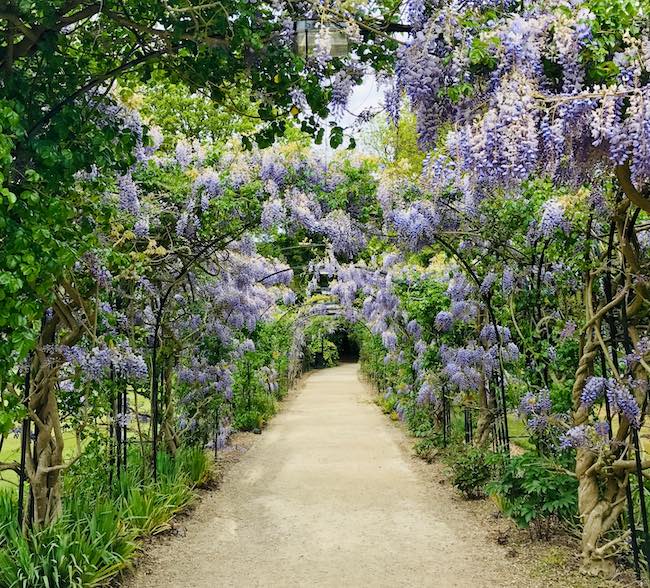10 Landscaping Tips for Your Garden Space

Gardening is a beloved pastime but requires a lot of work. Even when the growing season is over, there is still plenty to do to prepare for the next year.
It seems every new plant has an endless checklist of needs. Fortunately, these 10 landscaping tips can enhance your garden and ensure successful growth.
- Create a Garden Map
A garden map should be a rough sketch of your growing beds for tracking plants, preferably in a journal you can refer to each season.
The Royal Horticultural Society recommends a four-year crop rotation to enhance soil fertility and annual harvests. Crop rotation entails swapping out vegetables in different plots every season.
- Label Your Plants
Thanks to your garden map, you may already know what you’re growing and where it will germinate. However, consider labelling your plants after you plant them.
Write down the plant’s watering and fertilizer needs on the label. Also, note the types of pests and diseases to look for and how to mitigate an outbreak. These tags help you identify plant care needs more quickly.
- Remove Unwanted Debris
Some litterfall is beneficial for your garden space. Others — like rotting tree stumps and branches — could spell trouble.
Suppose you cut down a tree in your garden because it had an infection. Naturally, removing the tree prevents nearby trees from also becoming infected. However, a rotting stump attracts pests and diseases, which can then spread throughout your garden and property.
Clean up some of the natural litter in your garden after the cold and wet seasons, and remove any residual tree stumps from your yard.
- Invest in Quality Soil
Quality soil may be more expensive, but it’s worth it for greater yields. Soil should have excellent drainage to promote root growth. Certain soils — like those with sand — tend to dry out too quickly.
Organic or compost-based soil is best. You can purchase a soil testing kit to ensure it contains all the essential nutrients for proper growth. Of course, mixing nutrient-rich compost with store-bought soil is a good idea.
- Ensure Adequate Growing Conditions
Plants need about six hours of sunlight daily to flourish — a difficult goal under the U.K.’s overcast skies. In fact, the U.K. has only had an average of four hours of daily sunlight since 2001.
With limited light available for your plants, you’ll want to remove obstructions blocking your garden, such as trees with large canopies. Even slight changes can improve growing conditions.
- Stay Organized
When it comes to maintaining your garden space, organization equals efficiency. Keep your shed tidy by adding cabinetry and a peg board to hold your gardening equipment. The key is to remove piles and trip hazards on the floor.
An organized shed or garage ensures you have everything at your fingertips. Likewise, remember to stock up on the essentials at the beginning of the growing season. Gardeners should also tote their equipment in a bag while gardening to keep items in one place.
- Grow Companion Plants
Companion plants increase pollinator productivity and prevent pests like aphids, mealy bugs and thrips. They also boost plant nutrients and may provide shading.
For example, daisies grow only 10 centimeters and attract beneficial insects to your garden. Daisies are also excellent ground cover and hinder weed growth at the base of large vegetables.
Thyme is another plant you should grow next to tomatoes and shallots to prevent aphids and cabbage moths.
- Use Containers and Raised Beds
Maximize your garden space with containers and raised beds. Raised beds contain your plants, making them much easier to weed and trim.
Conversely, containers are portable, allowing you to transport your plants indoors or outdoors to extend your growing season. Both options can free up space in your garden and support plant growth.
- Create a Border
Run edging along your garden beds to contain your plants and the soil. You can use a plastic or rubber border or something more attractive like brick pavers.
Borders can add definition, colour and texture to your garden space. Edging also benefits your garden by improving drainage and preventing soil erosion.
- Take Plenty of Notes
In the same journal you draw your garden map, take ample notes. Your gardening journal should include the following reflections for the next season:
- Which plant varieties grew best in your garden.
- Important dates — first and last frosts and planting, germination and seed collecting days.
- Where you purchased your seeds or seedlings.
- Fertilizer and pesticide applications or alternatives.
- Irrigation amounts and times.
- Gardening mistakes and ways to improve your technique next time.
Maximize Your Garden’s Growing Potential
Your garden could use some extra love and care during the growing season. Enjoy abundant harvests by implementing these landscaping tips and methods. You can rest assured you’ll see excellent results for years to come.


